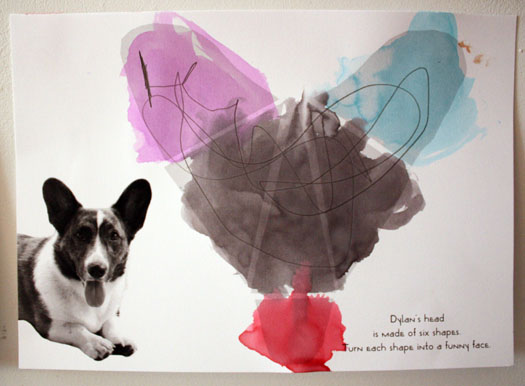in praise of watercolor
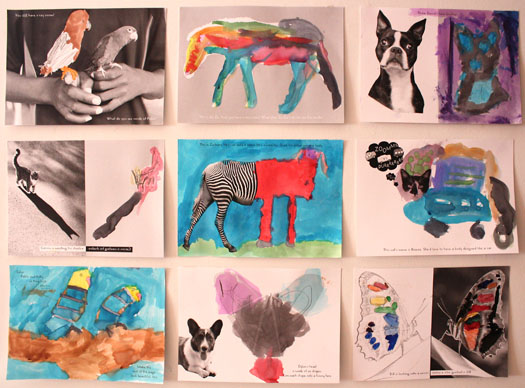
Yesterday, midway through my Animals ArtLab Art Camp workshop at the Center For Maine Contemporary Art, I began by setting out Fotoplay pages for the campers. They could choose whichever page they wanted to work on, but they all worked with pencils and watercolor paints. Looking back at the pages above, these works are, to me, a great reminder of what this medium, in the hands of a child, can be…
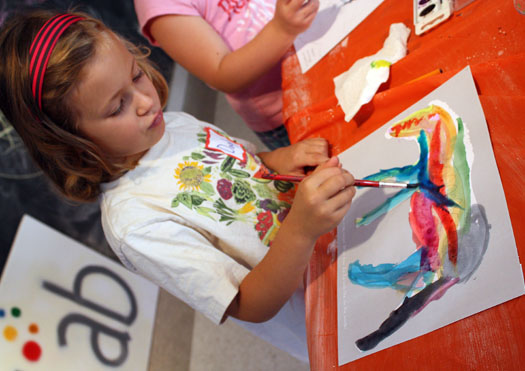
By the way, no elaborate instructions are needed. Way too careful, overly fussy instructions can be the bane of watercolor. (Among other things.) Kids will figure out very quickly that if they put too much water on their brush, the paint will be diluted. They will also understand, after they watch their yellow turn to muddy green that they need to wash their brushes out between colors. In order to learn about watercolor, they need to be given the paint, a brush, water, a paper towel, and some space. The rest they’ll figure out. And while they’re at it, they’ll figure out how to work with it in their own style.

Take a look at four year old Ula, above. Not only did she figure out how to use the medium, she used it with great consideration for how she approached her Fotoplay page. Note the pencil marks on the body of the cat on the right. (Those, she told me, are the bones in the skeleton of the cat.) And note how she painted that black shadow on the right.(!)
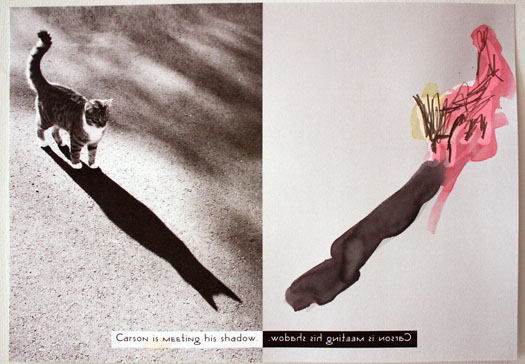
Other children used the paint as a super-selective coloring tool.

Audrey painted the feet, and some of the feathers on the head, but used pencil for the “bones” of the bird. (The prompt reads “You still have x-ray vision!”)
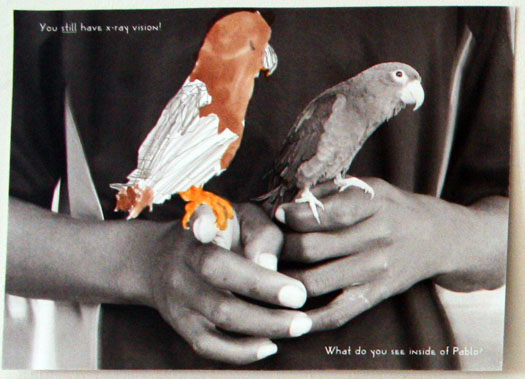
Eliza worked boldly from start to finish
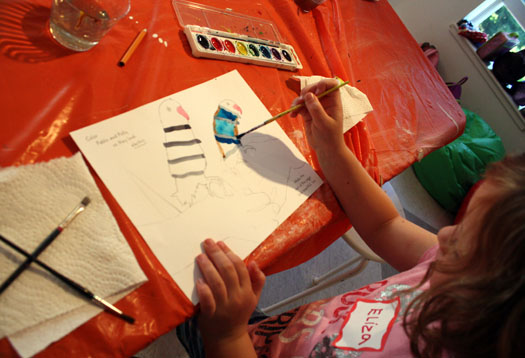
filling the whole page, from edge to edge, with bands and washes of color.
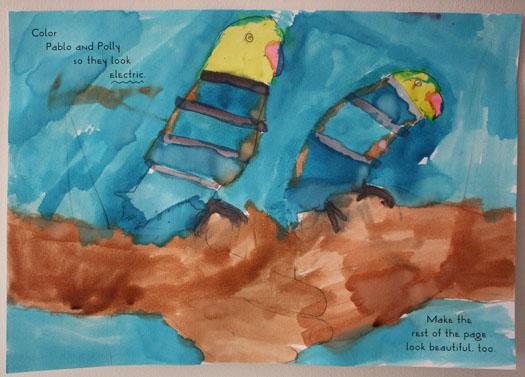
Mazy composed her page first with pencil

then painted it with vibrant colors, which surround the cool, funky form of her zebra-monster.
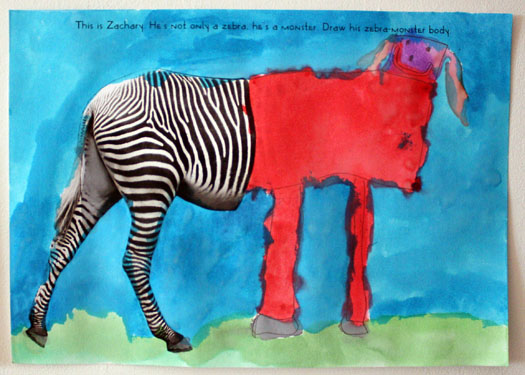
Lauren created the page below, color swatch by color swatch, first creating the bright spectrum on the left.
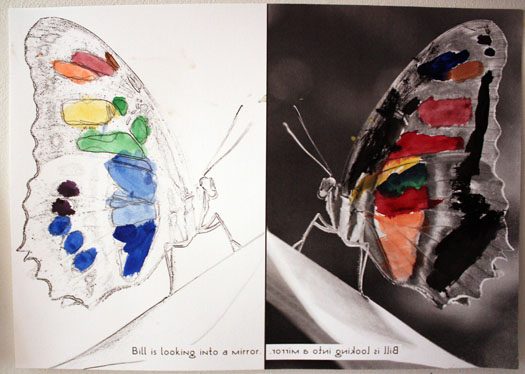
Other children chose to work with more water and bigger brushes,
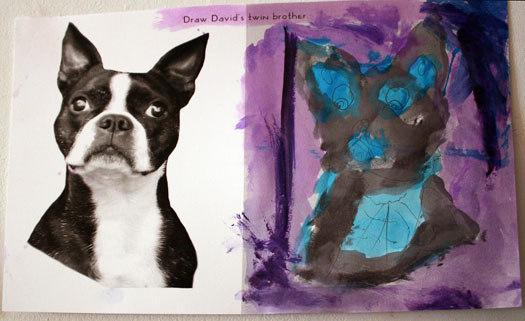
allowing the watercolors to bleed and mingle more loosely on the page.

What was particularly beautiful for me to watch, was each child watching the evolution of their own work,
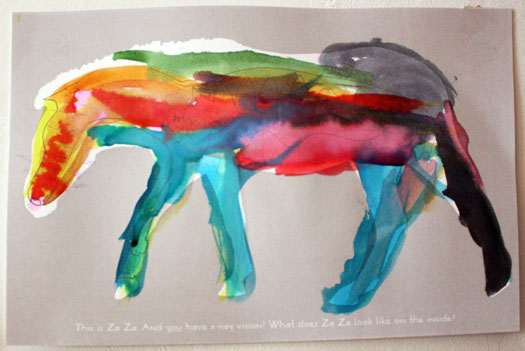
discovering how brilliant colors can flow from transparency, through translucency into opacity with a million possibilities in between.
